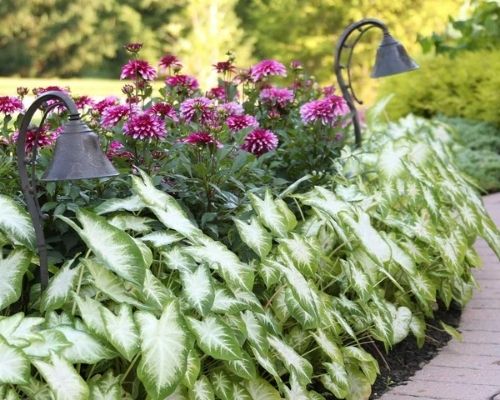Make Your Garden a Haven for Songbirds
Gardens are about so much more than plants. They also give us endless opportunities to deepen our connections to the natural world. Birds can be a wonderful bridge to this experience
Making your garden more bird-friendly can be as good for you as it is for the birds. Here are a few things to think about if you want to attract birds to your garden.
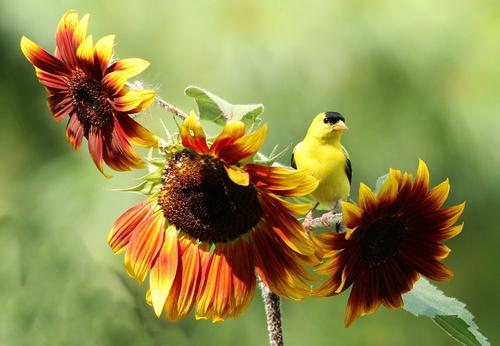
Create Layers of Vegetation
In nature, plant communities are layered. Beneath a canopy of tall and medium-sized trees there are typically shrubs of many different heights, a web of perennial vines, and a carpet of low-growing herbaceous plants. Birds use each of these layers for different purposes. They sing from the highest branches. They find food and nesting materials close to the ground. And most nests-building happens in the mid-zone among small trees and tall shrubs.
When designing a bird-friendly garden, take inspiration from these layered plant communities. Provide a tapestry of plants with different heights and forms so there are many appealing options for food and shelter. If possible, also include some conifers. Evergreens provide shelter during storms and there are many types of birds that rely on them for roosting and nesting.
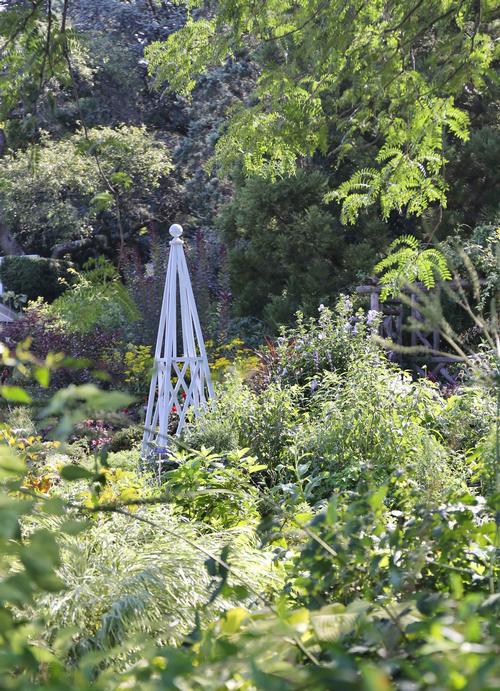
Provide Food
Different types of birds require different types of foods, and these needs change depending on the season. Bird-friendly gardens offer a wide variety of choices. These may include flowering trees that attract insects, shrubs and vines with summer, fall and winter berries, and herbaceous plants that produce edible seeds.
Make a list of the plants that are currently growing in your yard and use a calendar to note which foods are available during each season. Then add plants that will fill out the lean times. Wild birds are already familiar with the trees, shrubs and herbaceous plants that are native to your area, so including some of these plants will make them feel at home.
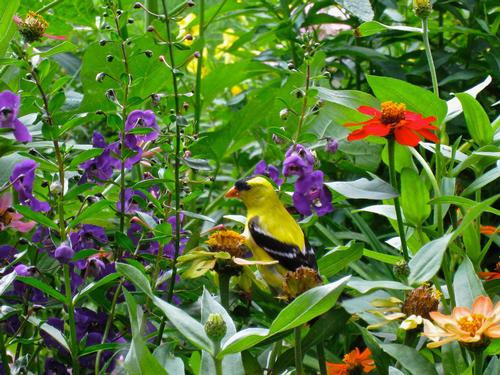
The types of plants that birds prefer vary from one part of the country to another. The National Audubon Society has compiled a useful database of bird-friendly plants by region. It’s available HERE.
Some of the plants on these lists that are particularly good for attracting birds include: elderberry, sumac, juniper, wild grapes, hawthorn, raspberry, dogwood, serviceberry, viburnum, American bittersweet, arborvitae, viburnum, bayberry, beautyberry, holly, winterberry, blue spruce, chokeberry, firethorn, cherry, sunflowers, coneflowers, thistle, cornflower, rudbeckia, asters, marigolds, zinnias and some types of ornamental grasses.
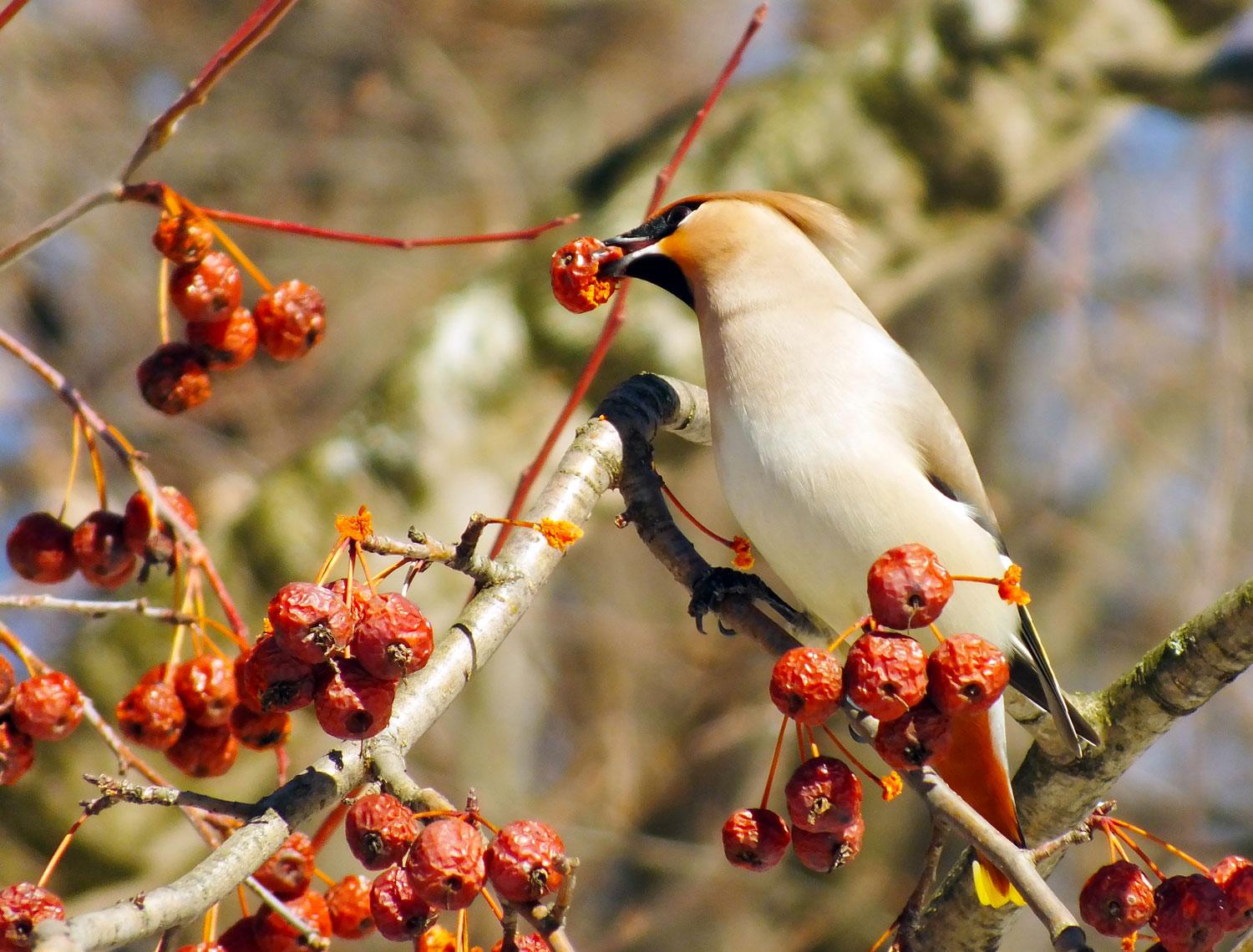
Limit the Size of Your Lawn
Nothing sets off a flower garden like a well-manicured lawn. But birds have little use for turf grass. It offers no food, no cover and no nesting sites. This doesn’t mean you should eliminate your lawn, but it’s worth rethinking how much of it you maintain.
If there’s an area in your yard that’s already difficult to mow or where the grass grows poorly, that’s a great place to start. A miniature bird habitat could feature a small tree or some shrubs, underplanted with perennials or a groundcover. Add a birdbath or bird feeder to create a focal point. Reducing the size of your lawn will make the birds happy and give you a little more free time to enjoy watching them.

Provide Water
Birds need reliable access to fresh water for drinking, bathing and cooling. Adding a water feature to your garden will increase the number of birds who visit. It can also create a new focal point in your garden and an opportunity for new plantings. Options range from a pond or recirculating stream to a simple stone with a natural depression that catches rainwater.
Birdbaths that are elevated on a pedestal make a design statement and also offer birds some protection from cats. The water feature should be shallow around the sides and no more than 3” deep at the center. A rough surface texture discourages slipping. Plan on cleaning the bath weekly. Optional accessories include drippers (birds are attracted to moving water) and electric immersion heaters for winter.
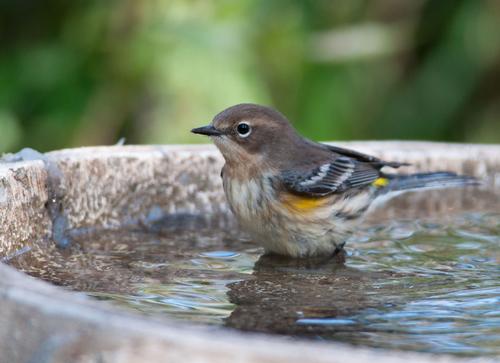
Add Nesting Boxes
Hosting a family of birds in your yard can provide hours of fun as you watch them building a nest and feeding their chicks. Many species of songbirds are willing to raise their young in a nesting box. These include bluebirds, swallows, wrens and warblers.
Some birds have specific requirements for the size of the entrance hole or the height of the box. You’ll find lots of good information about how to select or construct a nesting box in this article from the National Audubon Society.

Garden Organically
Protect the birds who visit your garden by avoiding the use of chemical insecticides and herbicides. Engaging in other organic gardening practices such as composting, mulching, building healthy soil and encouraging biodiversity, will make your yard both safer and more appealing to birds.
Compost piles and leaf piles offer lots of food options for ground-feeding birds such as sparrows and robins. They are also a great place to shop for nesting materials. Consider allowing a little part of your yard to “go wild.” Messy areas with weeds and brush are important habitat for bugs, caterpillars and other bird-friendly snacks.
Want to learn more about inviting nature into your garden? You may be interested in reading:
How to Design a Bee-Friendly Garden, How to Attract Butterflies to Your Garden, How to Design a Hummingbird Garden


